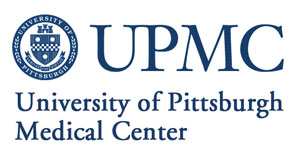Mathematical Modeling of the Acute Inflammatory Response Following Injury
| Status: | Recruiting |
|---|---|
| Conditions: | Hospital |
| Therapuetic Areas: | Other |
| Healthy: | No |
| Age Range: | 18 - Any |
| Updated: | 9/16/2017 |
| Start Date: | February 2003 |
| End Date: | July 2020 |
| Contact: | Stacy D Stull, MS |
| Email: | stullsd@upmc.edu |
| Phone: | 412-692-4338 |
The purpose of this research study is to gather clinical and biologic information from
severely injured patients to better understand and characterize the host response to injury
and inflammation across several domains. This information may improve outcome prediction,
improve clinical treatment of injured patients, and permit the construction of non-biologic
computerized models of illness that can be utilized to represent the host response in future
research efforts. This study is designed as the calibration of a mathematical model of this
response with predictive capabilities.
The central hypothesis governing this study is that adaptive immune elements are crucial to
determining the outcome of complex inflammatory scenarios. We propose to test these
hypotheses in the following interrelated Specific Aims:
Specific Aim 1: To develop a robust mathematical model describing trauma/hemorrhage-induced
inflammation in humans, its pathologic consequences, and possible therapies.
Specific Aim 2: To translate the mathematical model to humans and create software aimed at
individualized clinical decision-making.
Specific Aim 3: To determine the prevalence of an IL-1 receptor-associated kinase (IRAK-1)
variant haplotype located on the X-chromosome in an injured population, and to characterize
differences in the pro-inflammatory response across gender, relative to the IRAK-1 haplotype.
Specific Aim 4: To determine if increased arginase activity previously observed in isolated
peripheral blood mononuclear cells of trauma patients is a consequence of the presence of
contaminating activated granulocytes or a particular subset of an arginase positive monocyte
subset.
severely injured patients to better understand and characterize the host response to injury
and inflammation across several domains. This information may improve outcome prediction,
improve clinical treatment of injured patients, and permit the construction of non-biologic
computerized models of illness that can be utilized to represent the host response in future
research efforts. This study is designed as the calibration of a mathematical model of this
response with predictive capabilities.
The central hypothesis governing this study is that adaptive immune elements are crucial to
determining the outcome of complex inflammatory scenarios. We propose to test these
hypotheses in the following interrelated Specific Aims:
Specific Aim 1: To develop a robust mathematical model describing trauma/hemorrhage-induced
inflammation in humans, its pathologic consequences, and possible therapies.
Specific Aim 2: To translate the mathematical model to humans and create software aimed at
individualized clinical decision-making.
Specific Aim 3: To determine the prevalence of an IL-1 receptor-associated kinase (IRAK-1)
variant haplotype located on the X-chromosome in an injured population, and to characterize
differences in the pro-inflammatory response across gender, relative to the IRAK-1 haplotype.
Specific Aim 4: To determine if increased arginase activity previously observed in isolated
peripheral blood mononuclear cells of trauma patients is a consequence of the presence of
contaminating activated granulocytes or a particular subset of an arginase positive monocyte
subset.
Trauma patient cohort inclusion criteria:
- Present for treatment of their acute, blunt or penetrating injuries to the University
of Pittsburgh Medical Center within 6 hours of injury
- Age greater than or equal to 18 years
- Intact cervical spinal cord
- Are admitted to the Intensive Care Unit
Trauma patient cohort exclusion criteria:
- Anticipated survival < 24 hrs
- Anticipated survival < 28 days due to pre-existing condition
- Traumatic Brain injury (GCS ≤8 after ICU admission) AND brain CT abnormality within 12
hr of injury
- Inability to obtain consent from the subject or their legally authorized
representative.
- Pre-existing immunosuppression
- Transplant recipient
- Chronic high doses of steroids (>20 mg prednisone equivalents/day)
- Significant likelihood of high dose steroids (e.g. spinal cord injury)
- Oncolytic drug(s) therapy within the past 14 days
- Known HIV positive status and CD4 count < 200 cells/mm3
- Admission to the ICU primary for substance withdrawal.
- Inability to obtain 1st blood sample within 24 hours of injury.
Healthy volunteer cohort inclusion:
- Age greater than or equal to 18 years
- Weight > 110 pounds
- no recent illness or infection in the last two weeks
- no recent hospitalization or trauma in the last month
Healthy volunteer cohort exclusion:
- wt < 110 lbs
- infection or illness in the last two weeks
- Hospitalization or trauma in the last month
We found this trial at
1
site
200 Lothrop St
Pittsburgh, Pennsylvania 15213
Pittsburgh, Pennsylvania 15213

Principal Investigator: Jason L Sperry, MD
University of Pittsburgh Medical Center UPMC is one of the leading nonprofit health systems in...
Click here to add this to my saved trials